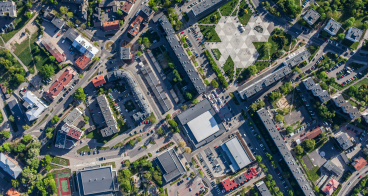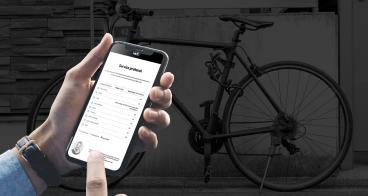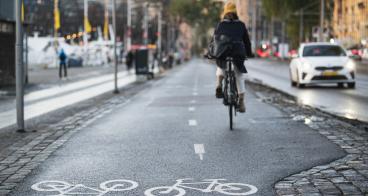Sidewalks alone don't make happy pedestrians | Keynote by Thomas Hug
Whether a car driver or a cycling enthusiast, we all inevitably walk on foot. However, millennium dream cities of glass façade promenades are not particularly attractive for pedestrians, and this is not solely due to narrow sidewalks, as Thomas Hug, Co-founder of Urbanista.ch points out.
Where would we be without walking? Being on foot or using mobility aids is the foundation of mobility. Even car drivers find themselves walking occasionally – perhaps just up the stairs from an underground parking lot. No wonder, then, that pedestrian traffic lays the cornerstone for everything. As The New York Times recently put it: the worst-kept secret.
Despite walking being ubiquitous, it's constantly underestimated. In the general population, our own feet are rarely referred to as a mode of transportation, even though most of us tread on them daily. Everyday traffic strategies and surveys frequently overlook walking. Or deliberately leave it out. As natural as walking is and as much as we learn it as toddlers, making a city "walkable" is challenging. It's an understatement to call it a century-long project.
Many cities are trying. In Zurich, two years ago, councillor Karin Rykart declared pedestrian traffic the top priority in the "mobility hierarchy" – and with some success, as now nine out of ten Zurich residents are satisfied with pedestrian infrastructure. Zurich isn't the only major city to recognise the importance of walking: Copenhagen committed to pedestrian traffic 15 years ago, emphasising its significance for societal interaction in its strategy. Toronto sees walking as an opportunity for people to leave their cars in the garage more frequently, making the city greener and healthier as a result. London also aims to become the best city for pedestrians with its "Walking Action Plan."
However, despite these ambitious plans, few cities fully implement them. While new roads bring more cars, as will be the case with the newly opened Gubrist Tunnel, more bike lanes accommodate cyclists, and trains cater to rail enthusiasts, sidewalks alone don't necessarily attract more pedestrians. It's repeatedly shown that promoting pedestrian traffic is a multifaceted challenge. 150 years ago, pedestrians held the world in their hands. Cities were built so that all daily services were within walking distance. The advent of cars changed this: urban structures became less dense, and distances grew longer. Pedestrian-friendly spaces from the past are now rarely constructed. Enormous new developments like those in Dübendorf or Leutschenbach don't encourage walking – today's building regulations largely prevent pedestrian-friendly neighbourhoods.
A walkable city is also an aesthetic one. This includes infrastructure on the streets themselves, which many cities focus on: the width of sidewalks or the number of trees providing shade. Buildings, however, play an equally important role. Diverse facades make walking interesting. Architect Jan Gehl's theory suggests that a new stimulus is needed about every five seconds. Facades should be captivating and offer variety – the opposite of the long, monotonous glass walls we're often presented with today. Gehl also notes that building canyons, not too tall but frequently providing nooks and seating, make walking more appealing.
Rather than fighting over every inch of sidewalk, we should pay more attention to buildings. A city in the far north is already doing that: Stockholm is one of the cities aiming to become a "Walkable City" by 2030 through a specific plan. This strategy covers new development areas, energy supply, and housing provision – with a constant focus on the pedestrian-friendly city. It shows, by example, that attractive pedestrian traffic requires more than just a sidewalk. Streets and buildings together create a pedestrian-friendly city that is vibrant and inclusive.
The author, Thomas Hug is co-founder of Urbanista.ch. Urbanista designs the future of spatial transformation and enables its implementation in society. The article was first published in German at tsüri.ch.
Published on 11 August 2023.






